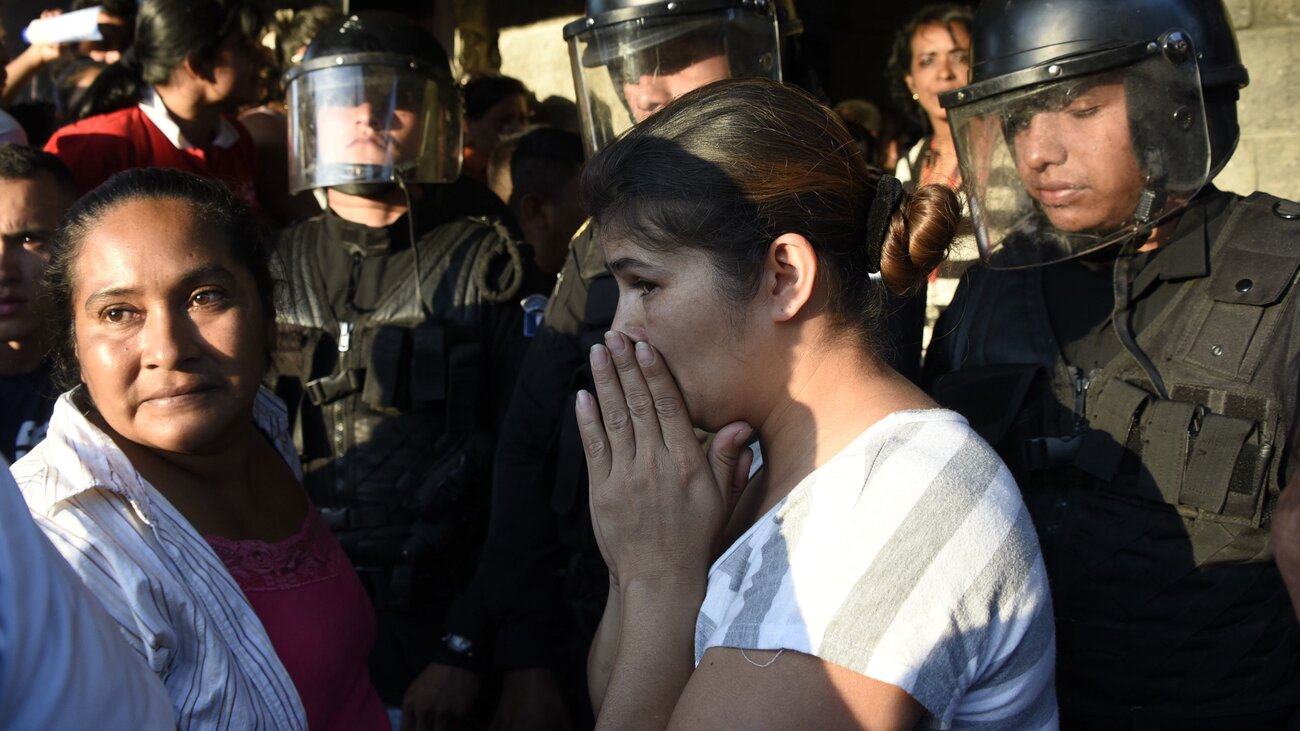The Anguish of Abandoned Children
"On International Women's Day, these young women died due to the state's lack of action."
"It's a situation as grave as this one that draws the attention to what needs to change, to what Guatemalan children are living [through]."
Abner David Paredes Cruz, youth advocate, Guatemala Human Rights
"Children from the street, children who had been in gangs, children with disabilities, it was a mix of many populations with many difficulties."
"By the time the room was unlocked, it was too late."
Leonel Dubon, director, Guatemala child advocacy group

Relatives gather outside the Virgin of the Assumption
Safe House near Guatemala City, Guatemala. Dozens of girls died after a
fire broke out at the youth shelter on Wednesday. Johan Ordonez/AFP/Getty Images
The Virgen de la Asuncion Safe Home in San Jose Pinula, Guatemala is a complex of multiple buildings and dormitories surrounded by a ten-metre-high wall, and trees. It was designed to hold 500 residents, to serve as a shelter for young people who had served criminal sentences, with no families or homes to return to. Former convicted felons were placed where children recovering from sexual abuse or suffering from mental illnesses were also housed.
Residents of the "safe home" had little opportunity to take advantage of proper hygiene, they had few possessions such as clothing and shoes, and nor did they all have proper beds, with many sleeping on worn mats laid on the floors, reported a November 2015 human rights report. The boys and girls in this "safe home" represented the nation's most vulnerable. Their backgrounds were of broken families and troubled homes. Some suffered from mental illness, abandonment and abuse.

A woman lights a candle during a vigil in remembrance of the victims of a fire at a children's shelter, outside the morgue where the bodies are being identified in Guatemala City on Wednesday. (Moises Castillo / The Associated Press)
Because they had nowhere else to go, they were unfailingly sent to the sprawling complex in the town of San Jose Pinula. And there, according to reports, they were sexually violated, shoved into overcrowded areas and poor quality food given them in scarce quantities. The children had complained of the unspeakable conditions they were forced to live in, and the abuse heaped upon them, but there were never any responses.
On Tuesday night dozens of the young people attempted to storm the gates of their unconscionable prison in a mass escape, to which riot police responded, returning many of the children back to the facility. There, supervisors locked them into their dormitories. And in one of those dorms a teen-age girl set her mattress on fire while others ate their breakfasts on Wednesday morning. She was heard to scream she was prepared to sacrifice herself "so that everyone would know what they were living inside".
The fire spread throughout the dormitory. Nineteen girls, from age 13 to 17 died at the site, bodies so burned families were unable to identify them without a struggle. Another 40 girls were taken to hospitals where some later died. A few months earlier a judge had ordered that the facility transfer its residents back to their families and to other alternate shelters and close its facilities to further use.
Despite that order, the shelter remained open and operational.
A woman who lives near the shelter informed a local newspaper that three of the girls had once asked for her help to commit suicide. "Give me pills, a knife or something", they pleaded with her. "We don't want to live here".
 |
| Activist Julia Silvestre tapes a sign to the front gate of Presidential House with a message that reads in Spanish: "Guatemala is not a safe home" in remembrance of the victims of a fire at a youth shelter. (Luis Soto) |
Labels: Catastrophe, Child Abuse, Child Welfare, Guatemala

<< Home